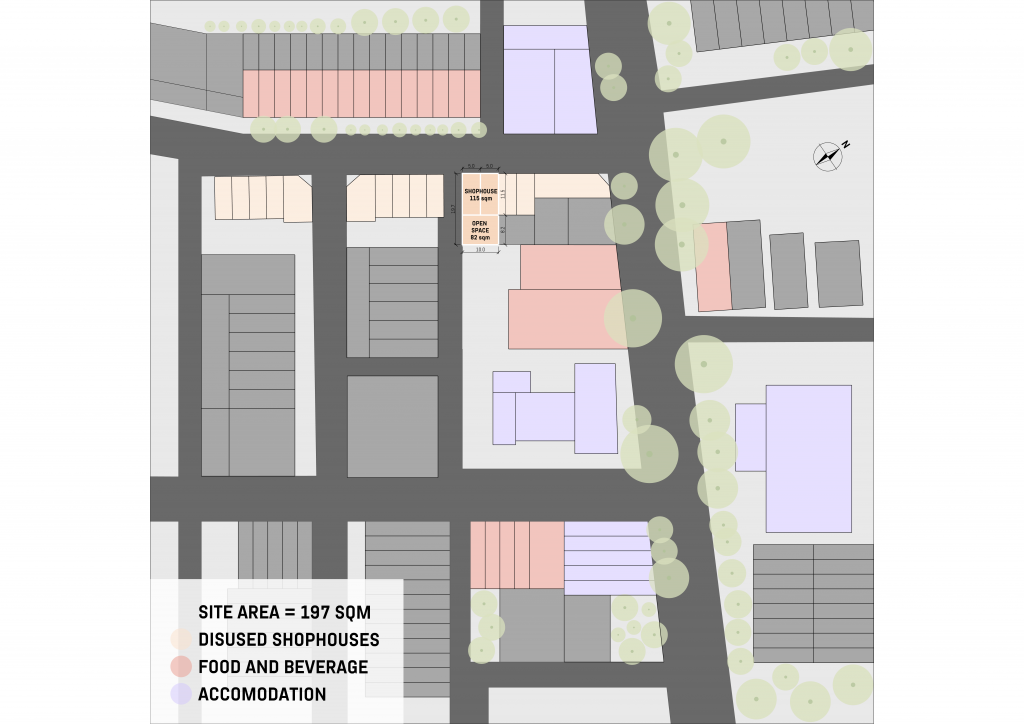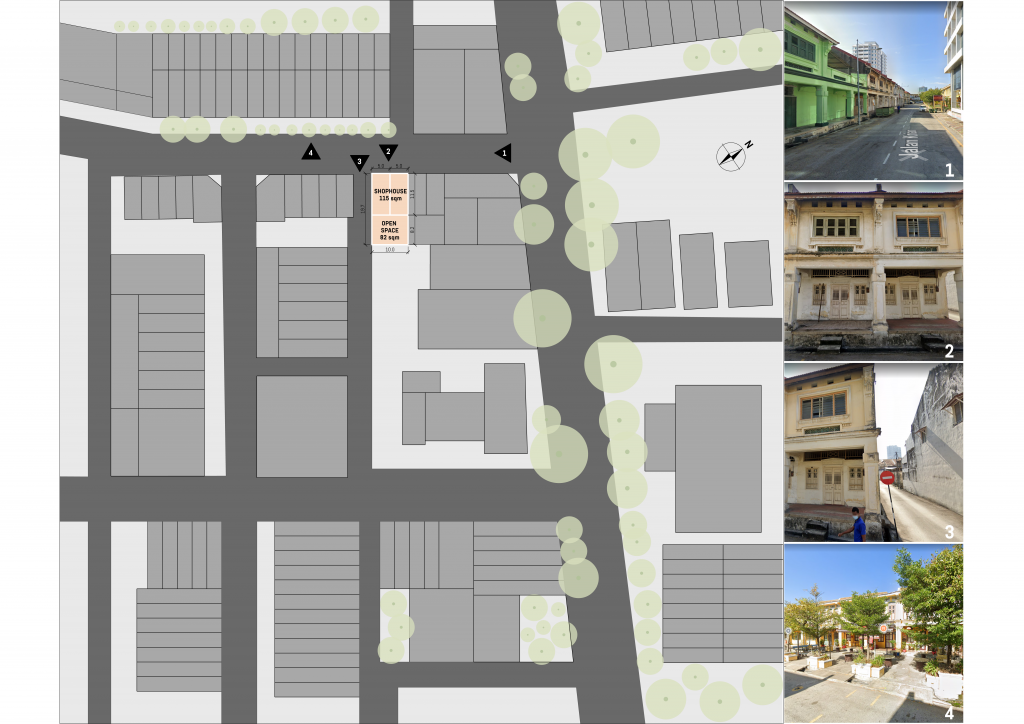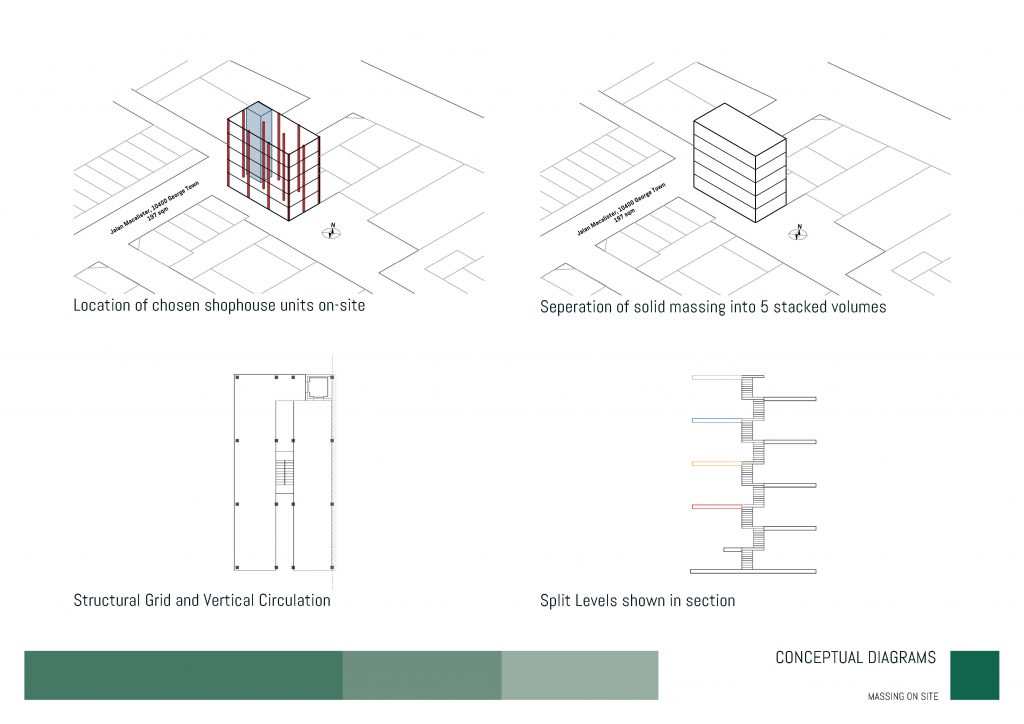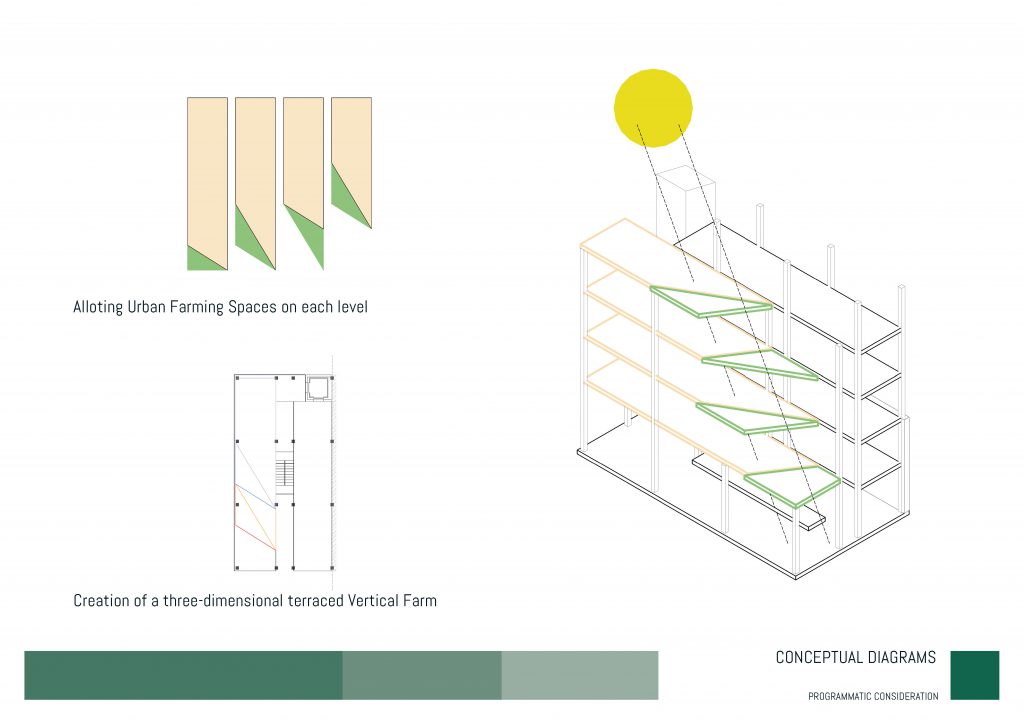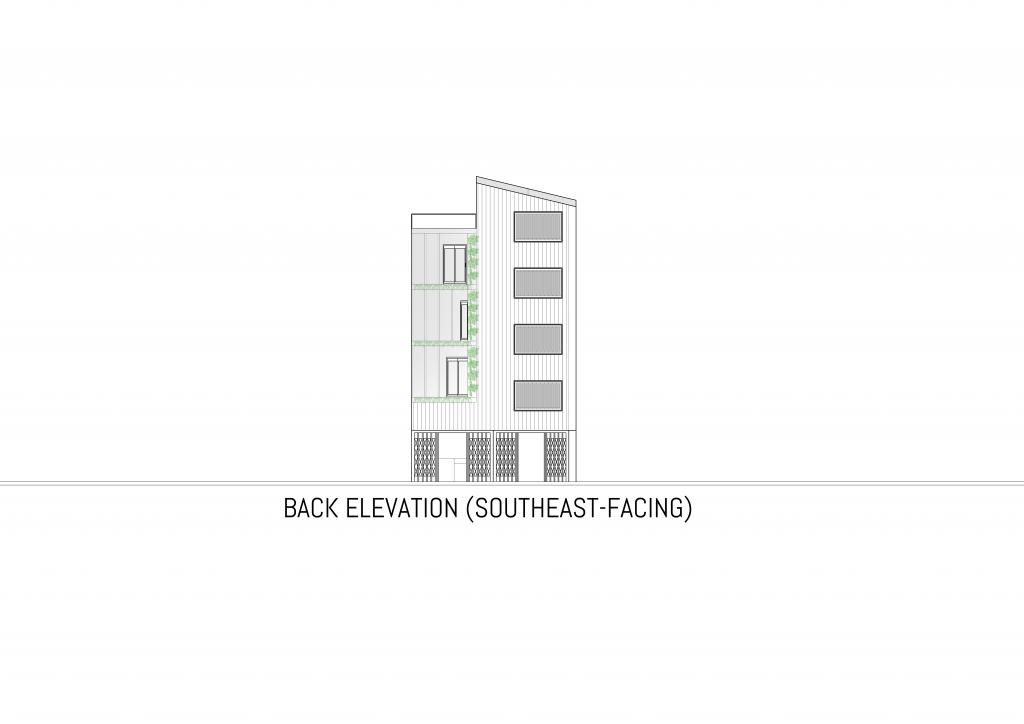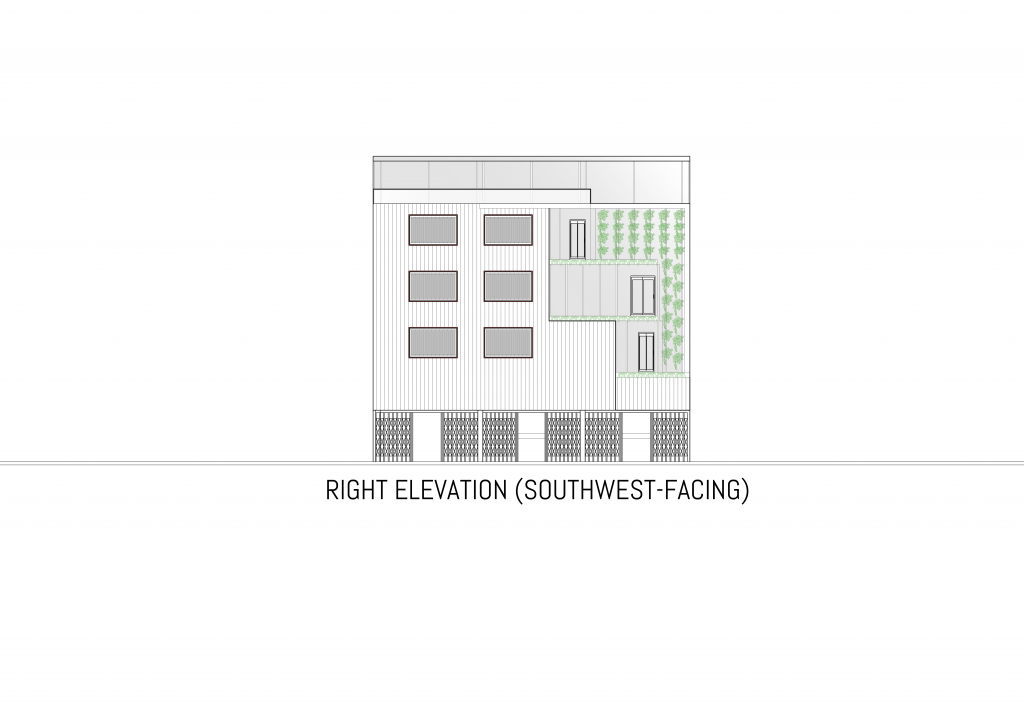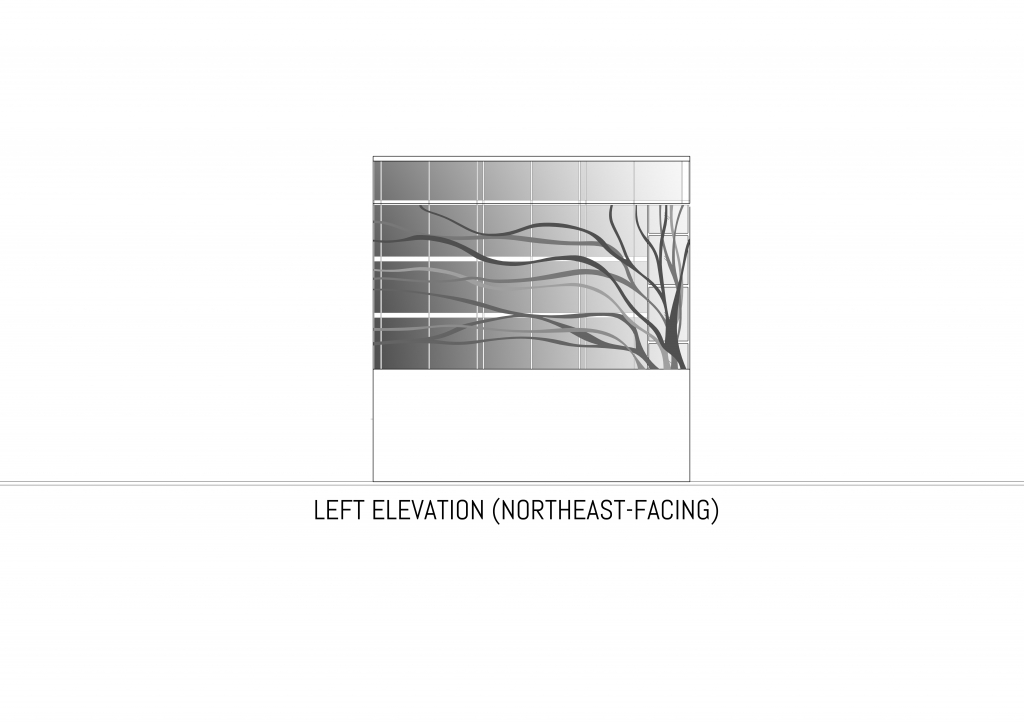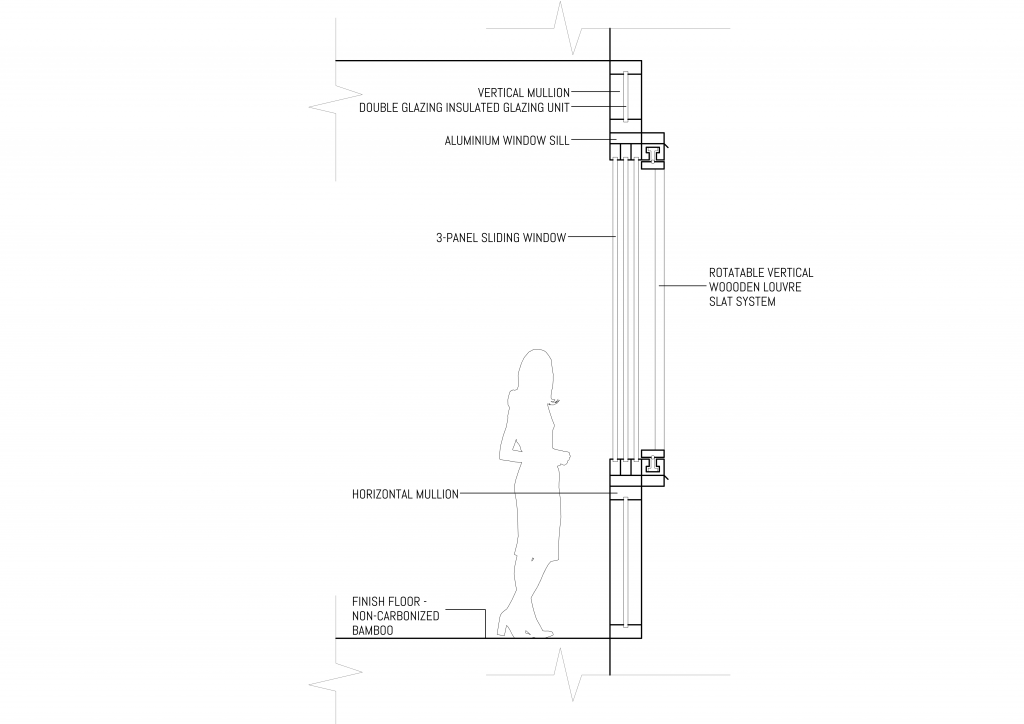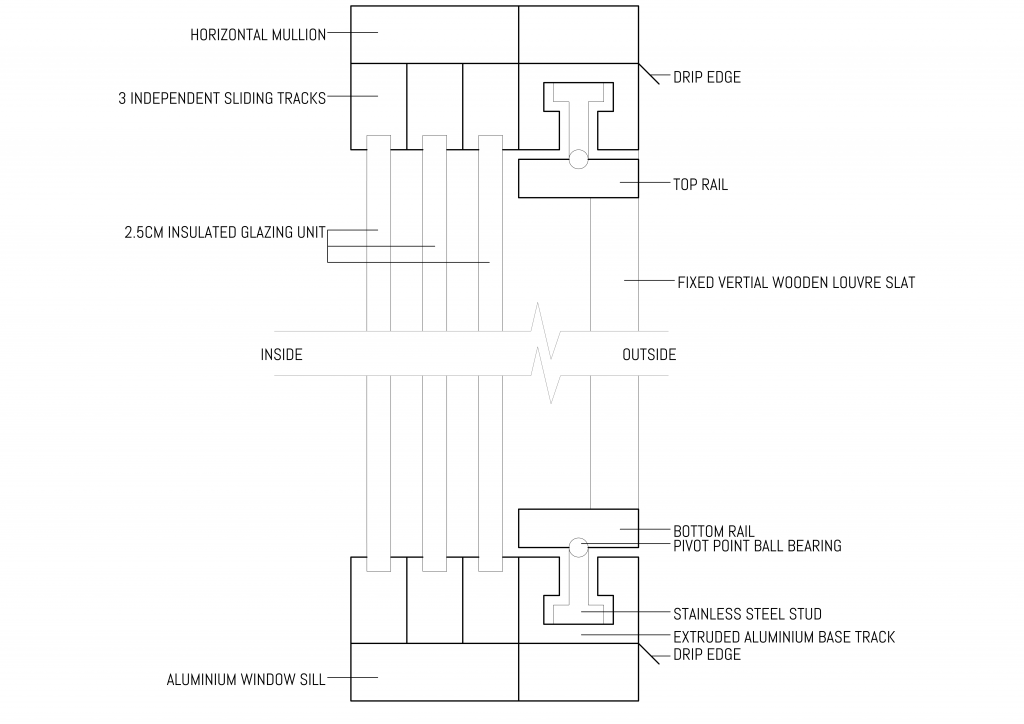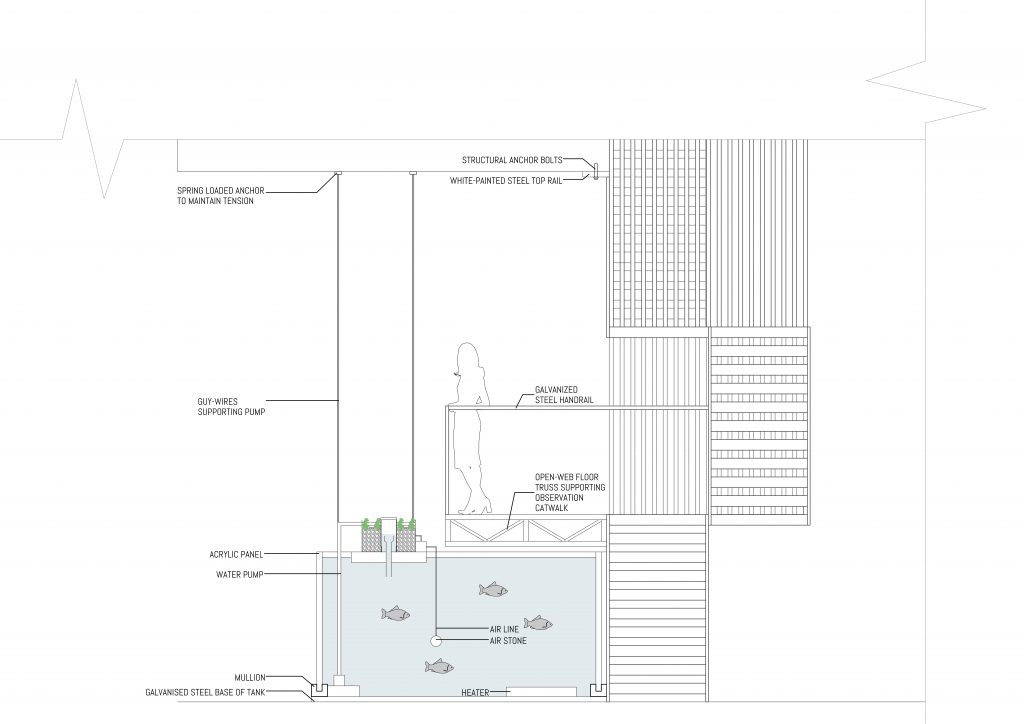Final | Georgetown, Penang, Malaysia | Agro Community Kitchen
by Mauricio_Mari_Jaelle_Salas
Declining Local Culinary Culture
George Town is at the forefront of Penang’s street food scene, a UNESCO World Heritage Site recognized for its cultural and historical significance. However, in recent years Penang food stalls are facing challenges in keeping the local culinary culture alive. Hawkers from the post-World War II era are retiring, their children being less inclined to take over the business due to the long hours of food preparation spent in hot kitchens for low pay. Wider varieties of cuisines, such as cafes and fast food chain outlets are popping up around the heritage zone, drawing in both residents and visitors alike.
Rising Prominence of Urban Agriculture
Penang is also hoping to set up over 100 community farm hubs, based on the urban farming concept in the state by 2023, the Penang Digital Library being the pilot project for the development of other pockets of empty space into urban farms.
Updated Project Statement
The project repurposes disused heritage shophouses into a communal kitchen that provides local hawkers with more comfortable working environments, and provides an avenue to equip the youth and children with culinary skills. The Agro Community Kitchen advocates celebrating the past while embracing the future: Urban Farming. Encouraging the embarkment of self-sustainable urban farming can enable the local community to grow food independently, and potentially provide opportunities for employment, entrepreneurship and social cohesion.
Faced with the challenge of the shophouse typology characterized by long and compact proportions, which do not allow for much variation in plan, the Agro Community Kitchen possesses a split-level design to enhance the use of space and allow for interesting visual perspectives. The envelope of the building acts as an interface between the interior spaces and urban context, where openings are designed to create gradients of solar intensity, ventilation, intimacy and privacy.
Identified Integrated Programs and Targeted Users
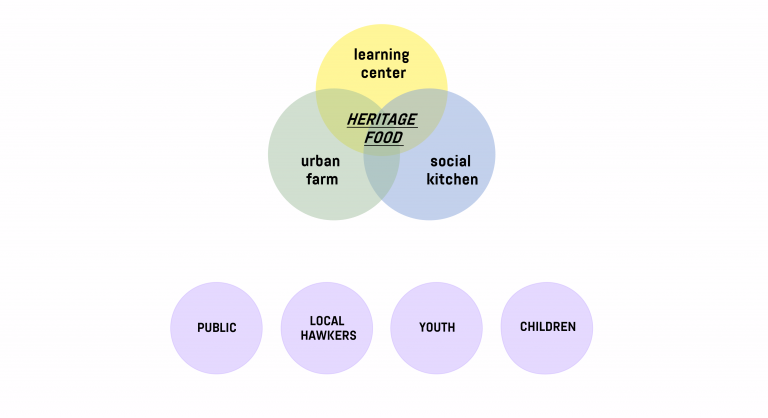
Site Curation
The site is strategically located at a prominent location with easy access to every direction in the city.
Potential as a Learning Centre with educational institutions within the vicinity including: The Salvation Army Penang’s Children’s Home, Sekolah Menengah Kebangsaan (Perempuan) Methodist Girls School, and UOW Malaysia KDU Penang University College
The Site Plan shows the potential to create a new community node that serves local hawkers while attracting tourists and the public, in which the surrounding activity network has been mapped by identifying nearby disused shophouses and buildings with programs related to food and beverage and tourist accommodation.
Conceptual Diagrams
Sun Analysis
To maximize spatial efficiency and the amount of direct access to natural light that reaches the spaces where food is grown, I studied the weather and climate of Georgetown, Penang, Malaysia, through literature research and grasshopper simulations to determine the sun’s position at different times of the day and year.
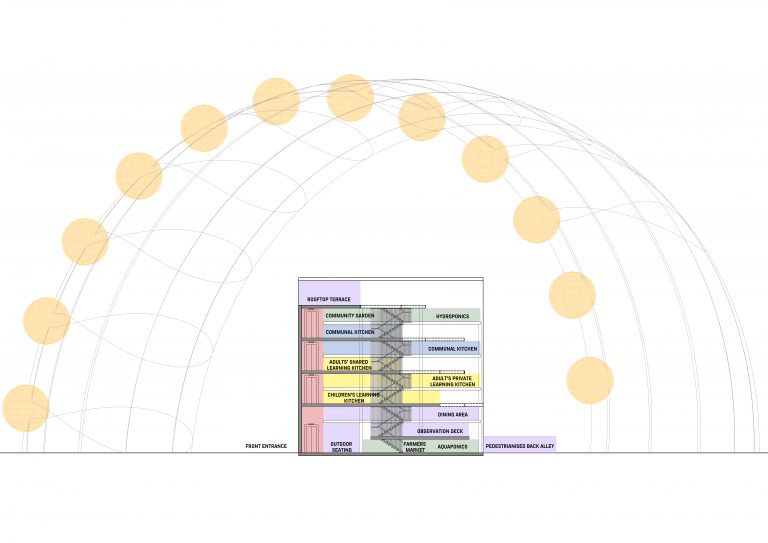
Right Section with Sun Analysis
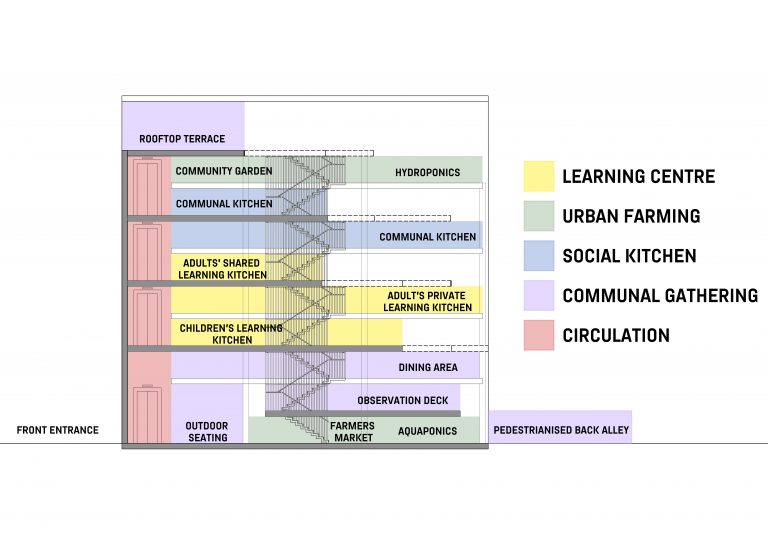
Programmatic Distribution Shown in Right Section
Elevation
I have designed the back and right elevation which are south-facing to be a green façade as they receive the most direct sunlight (due to the site’s location within the northern hemisphere), in contrast to the north-facing façade where there is insufficient natural light to sustain plant growth. A maintenance walkway will be incorporated to allow for potential fruit-harvesting on the façade in addition to the interior food-growing spaces.
For the front and left elevation which are north-facing, an external filigree made of Corian (dyed petroleum-based material where there is no paint to chip or peel off) clads the glass façades. The organic branching pattern of trees are used as an inspiration to generate bifurcations of overlapping braids to form a façade design that pays homage to the building’s urban agriculture program.
Enlarged Detailed Drawings of Facade
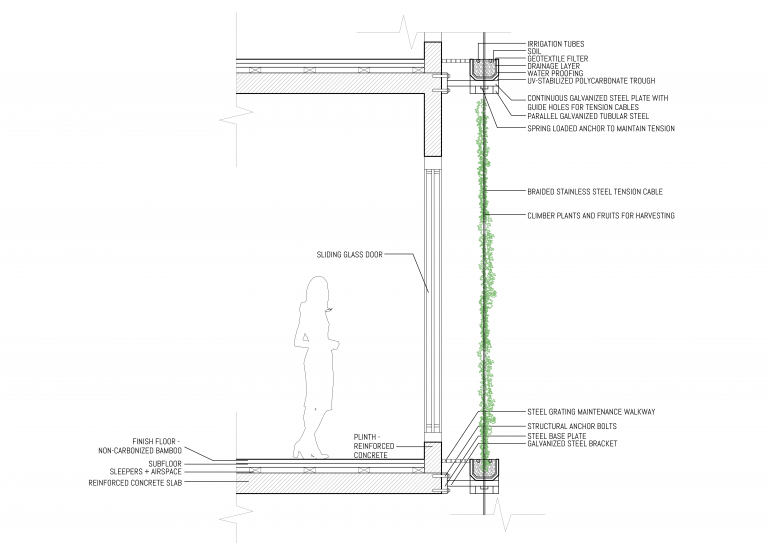
Indirect Green Façade with Maintenance Walkway (Section)
Floor Plans
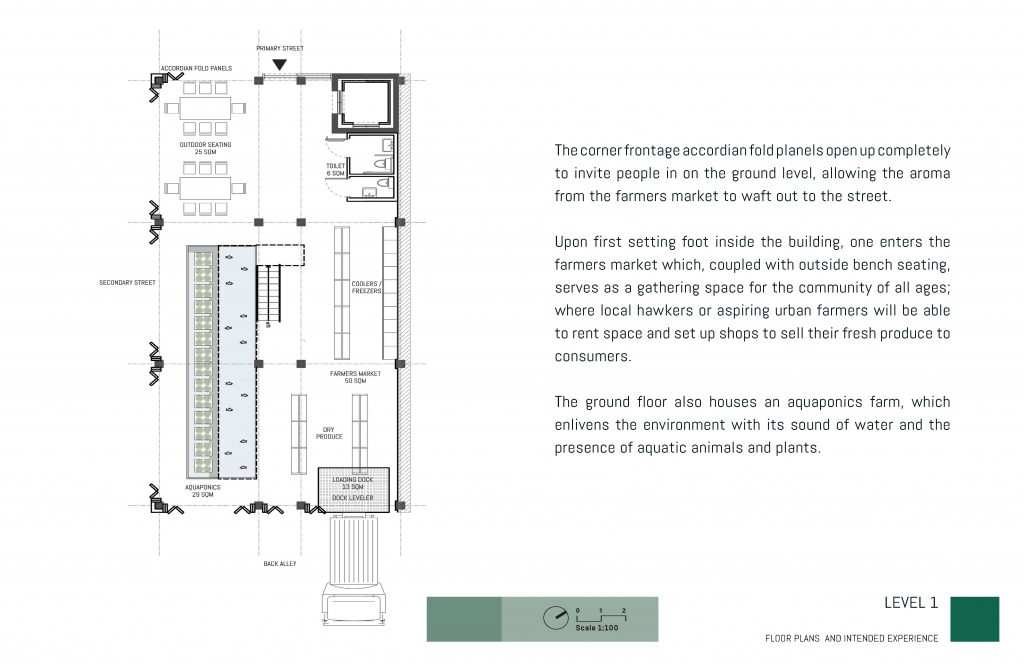

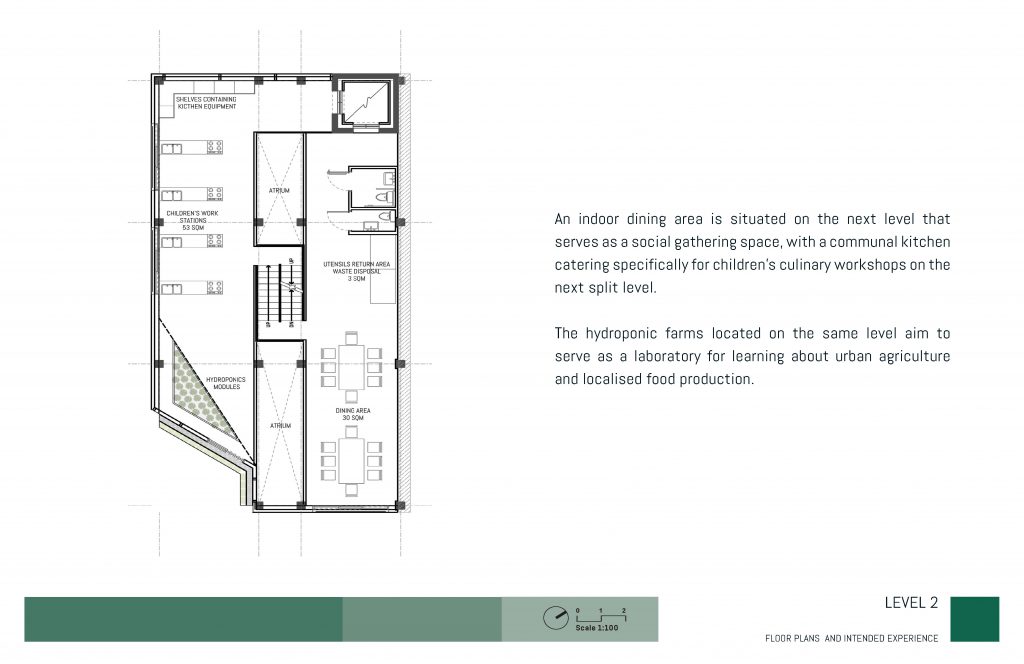
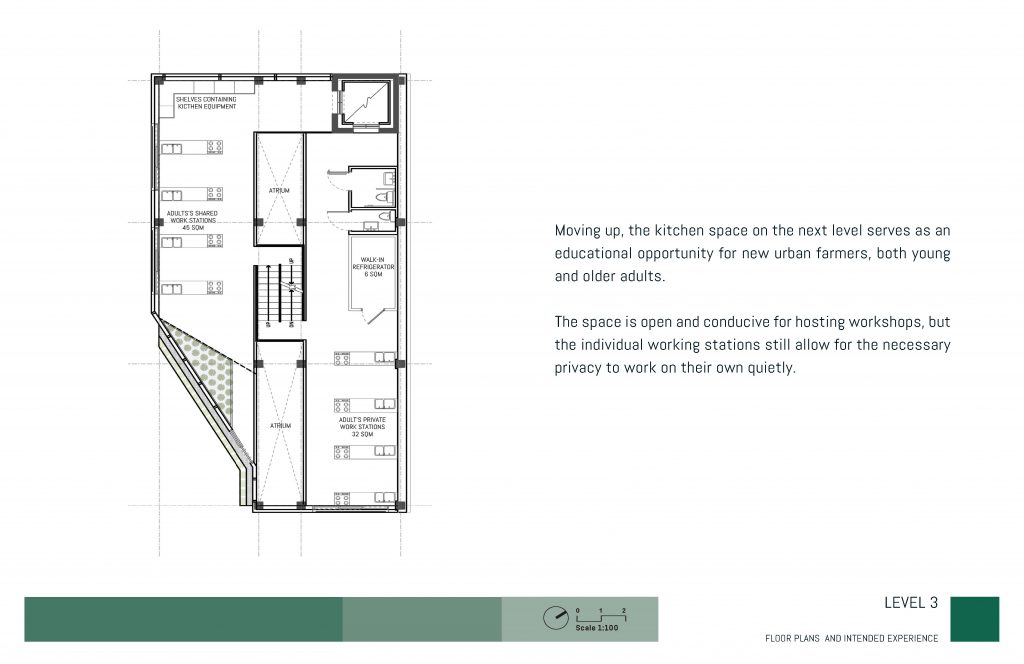

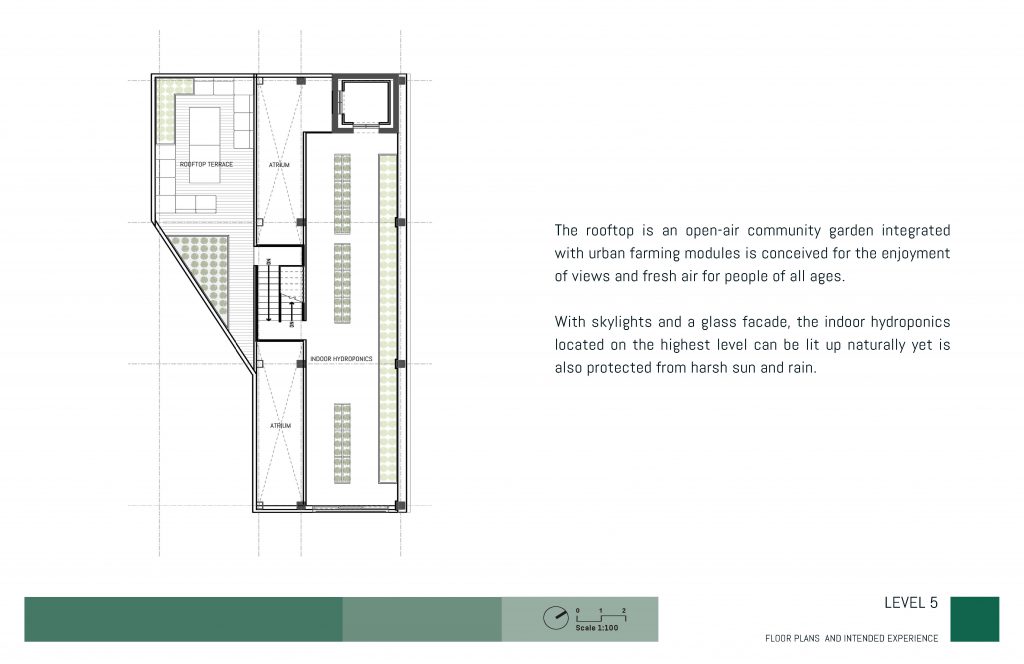
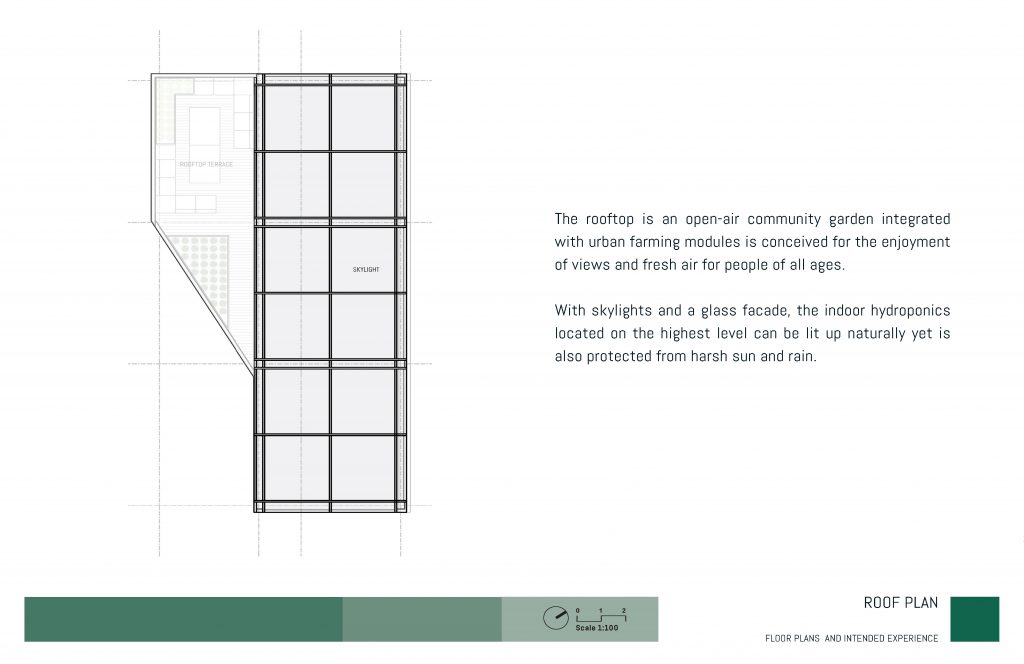
Enlarged Detailed Drawings of Stairs
While the design of the building encourages spaces to be naturally lit up in the day, light coves have been incorporated into the stairs in consideration for the use of the building at night or a rainy day.
With traditional staircases, the view to adjoining levels are blocked. This can create a limited, closed-off view within the building. Floating stairs is used as as a solution in the shophouse that offers smaller spaces, creating a send of openness and making the spaces appear larger, and more expansive.
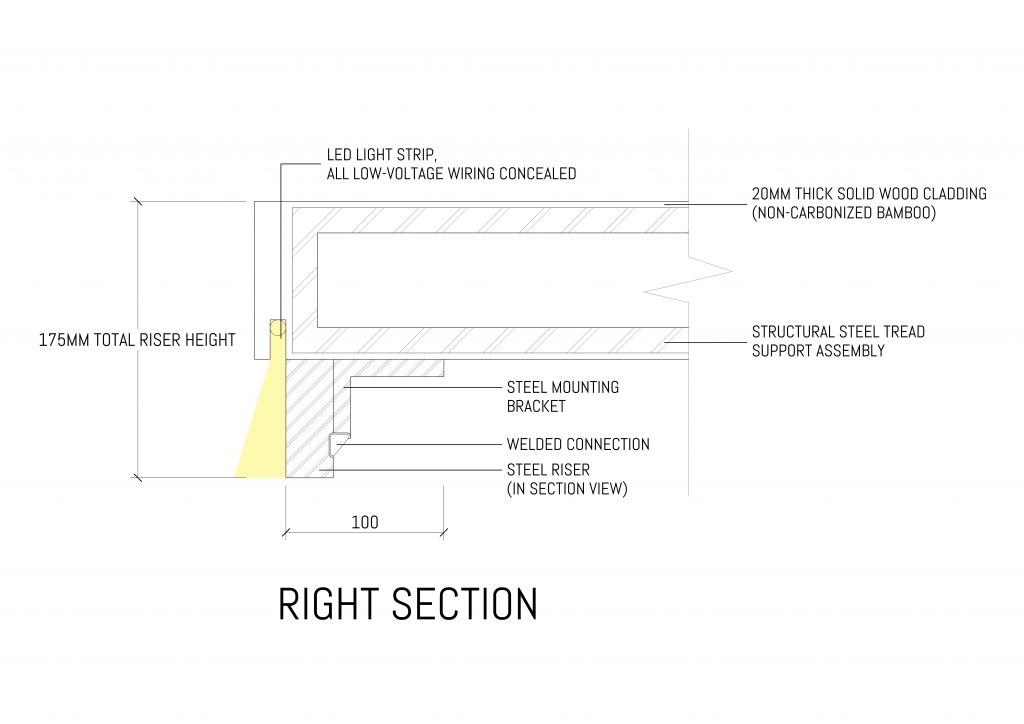
Enlarged Detailed Drawings of Aquaponics Module with Catwalk
Exterior Axonometric
Highlighting the spatial quality of the terraced vertical farm formed by the triangular “green spaces” on the glass façade, which enables urban farming to prosper as maximum light is able to flow to the farms on the ground floor.
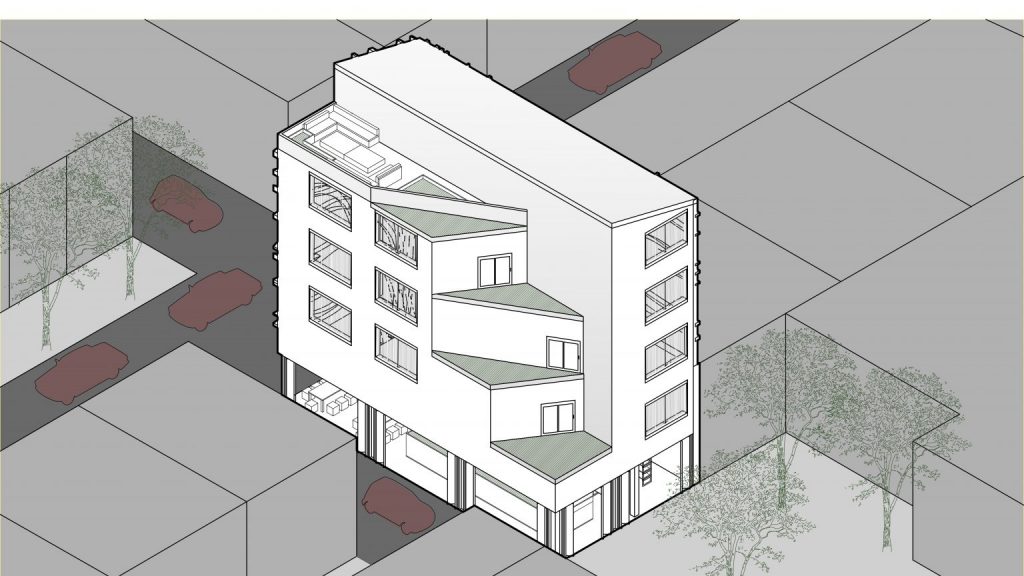
With Site Context
Section | Scale @A3 1:100
Highlighting how the different split levels are designed to cater to the different target users including the public, hawkers, youth and children, and how they interact between the spaces based on the program.
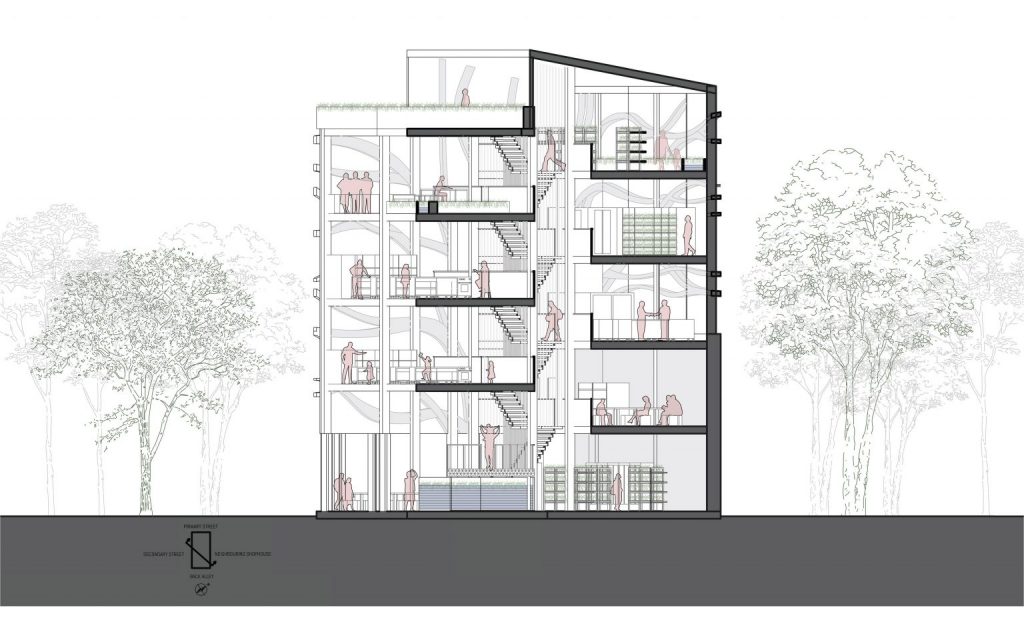
Interior Perspective Render
Highlighting how the split level design and materiality of the stairs and balusters allow for greater visual connectivity between “adjacent” spaces.
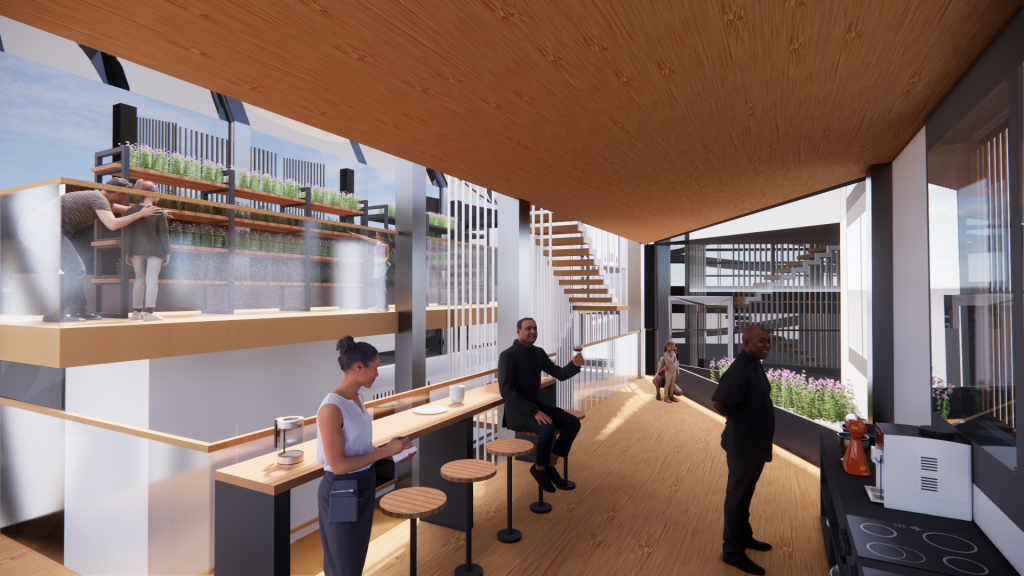
Original source from: http://asd.courses.sutd.edu.sg/option-studio-two/2021/08/15/week-13-georgetown-penang-malaysia-agro-community-kitchen/
Categories: 20.112 Sustainable Design Option Studio 2, Core Modules, Curriculum Projects, Research and Projects, Student Projects, Sustainable Design Option Studios
